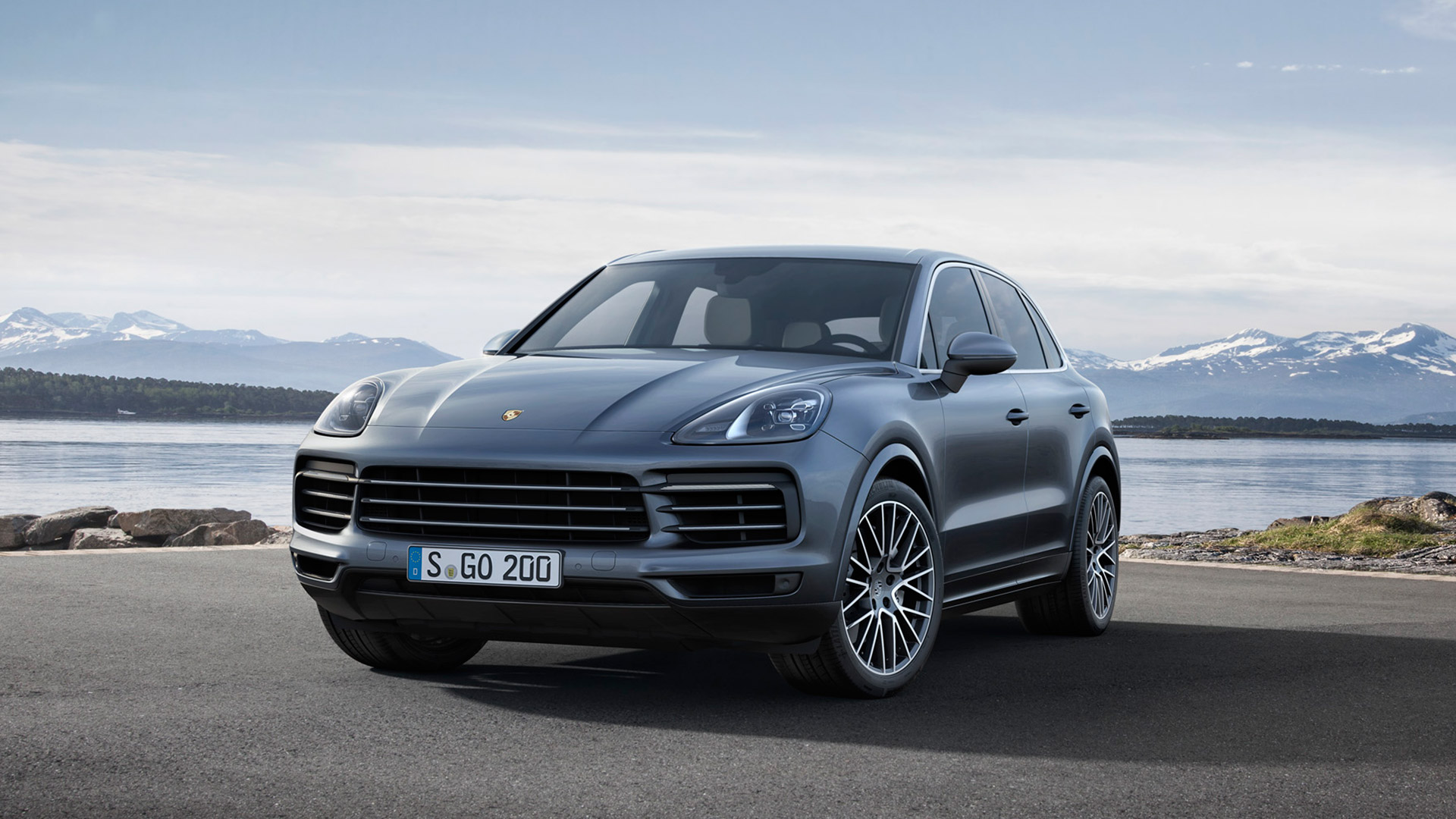

Believe it or not, that’s the new 2019 Porsche Cayenne posing dramatically in the picture above. Evolution, not revolution, was the name of the game when it came to redesigning Zuffenhausen’s cash cow—at least, from the outside. Beneath that familiar skin, however, lies a crossover packing many of the best tech bits and pieces held on hand by the German carmaker that was once known for only selling sports cars, but now moves more SUVs than anything else.
First off, though—the design. Porsche says the 2019 Cayenne maintains “a strong visual connection to its predecessors,” which is P.R.-speak for “Yeah, we didn’t change much.” The alterations are most noticeable towards the crossover’s stern; there, the LED taillamps now stretch across the whole derriere, which has been tightened up here and there. Up front, however, the new sport-ute maintains effectively the same look as the previous model—with perhaps a bit of the first-gen’s mug sprinkled into the mix. While perhaps a bit of a letdown for anyone hoping for radical beauty, it’s familiar both as a Cayenne and a descendant of Ferdinand’s early cars. There may be more than one way to skin a cat, as the saying goes, but it seems there’s only one way to graft a Porsche face onto an SUV.

As is something of a tradition at Porsche, the new Cayenne—which is based on the same platform as the Bentley Bentayga and Audi Q7—will come with a limited suite of powertrains when it lands on U.S. shores sometime in the middle of 2018. Two models will be offered at the start, both packing turbocharged six-cylinder engines: the basic Cayenne, which makes 340 horsepower and 332 pound-feet of torque thanks to a mono-turbo 3.0-liter V6; and the Cayenne S, which uses a 2.9-liter twin-turbo V6 to make 440 horsepower and 406 pound-feet of torque. Either way, power flows to all four wheels through a new eight-speed Tiptronic—a.k.a. a conventional automatic, not a dual-clutch—transmission. (If those engines sound familiar, they should; they’re the same engines that power the base model Panamera and the more thrilling Panamera 4S, respectively.)
Those figures may be no match for, say, the Jeep Grand Cherokee Trackhawk, but this Porker should still be plenty quick. According to Porsche’s oft-conservative figures, the Cayenne S should do the 0–60 mile-per-hour dash in as little as 4.6 seconds and run the quarter-mile in 13.2 seconds on the way to a 164 mph top speed when equipped with the Sport Chrono pack, which bundles in launch control. (Non-Sport Chrono ones should do the 0-60 in 4.9.) Even the basic Cayenne should be able to run from 0–60 in 5.6 seconds and hit the quarter-mile mark in 14.2 seconds with Sport Chrono, on the way to a 152 mph Vmax.
Of course, the Cayenne is still a Porsche, so it’s designed to handle, too. As many as 143 pounds have been shaved off the crossover on a model-for-model basis, and the SUV now rolls on staggered tires. Porsche Active Suspension Management comes standard on the Cayenne S, and is optional on the other model; much of the rest of the carmaker’s bin full of performance-enhancing features—Porsche Dynamic Chassis Control with 48-volt-controlled stabilizer bars, three-mode air suspension, Porsche 4D Chassis Control, and rear-axle steering—are likewise on the options list. In addition, the Cayenne becomes the first model in the company’s fleet to offer Porsche Surface Coated Brake, which coats the cast-iron brake discs in a tungsten-carbide coating to simultaneously increase the stoppers’ grip and cut down on wear. (Carbon-ceramic discs remain optional.)
And while you can probably count the number of buyers who use the capability on two hands, Porsche continues to bake plenty of off-road prowess into the Cayenne. Drivers can switch the eight-speed slushbox’s programming between on-road mode and other programs designed for rocks, gravel, sand, or mud. It won’t be enough to keep up with a Range Rover in the Amazon, but it ought to be capable enough to help the Cayenne claw through any minor disaster or unexpected turn of events.

Inside, the 2019 Cayenne ought to look awfully familiar to anyone who’s spent time behind the wheel of the latest Panamera. The infotainment system uses the same 12.3-inch touchscreen display as the sedan, and the shift lever is surrounded by the same haptic-feedback-equipped touch-sensitive controls. The instrument cluster stacks 7-inch displays on either side of the de rigueur analog tachometer. Even the steering wheel is identical, all the way down to the 918 Spyder-inspired Mode Selector extrusion on Sport Chrono-equipped models. Indeed, the quickest way to tell the two cars’ interiors apart? If it has grab handles near the center console…it’s a Cayenne.

But more than anything else, the Cayenne seen here is a tease of what’s to come. Knowing Porsche’s blessed predictability, these two six-cylinder models are sure to be followed by a cavalcade of other Cayennes, packing turbocharged eight-cylinders, plug-in hybrid powertrains, and probably a few innovations the company hasn’t yet set a precedent for. (Don’t expect any diesels to come America’s way, obviously.)
For now, though, we get the Cayenne and Cayenne S to look at. The former will start at $66,750 when it goes on sale, while the latter’s MSRP begins at $83,950. Though we’re sure you can blast either version well into six figures if you go buck-wild on the infamous Porsche options sheet.


